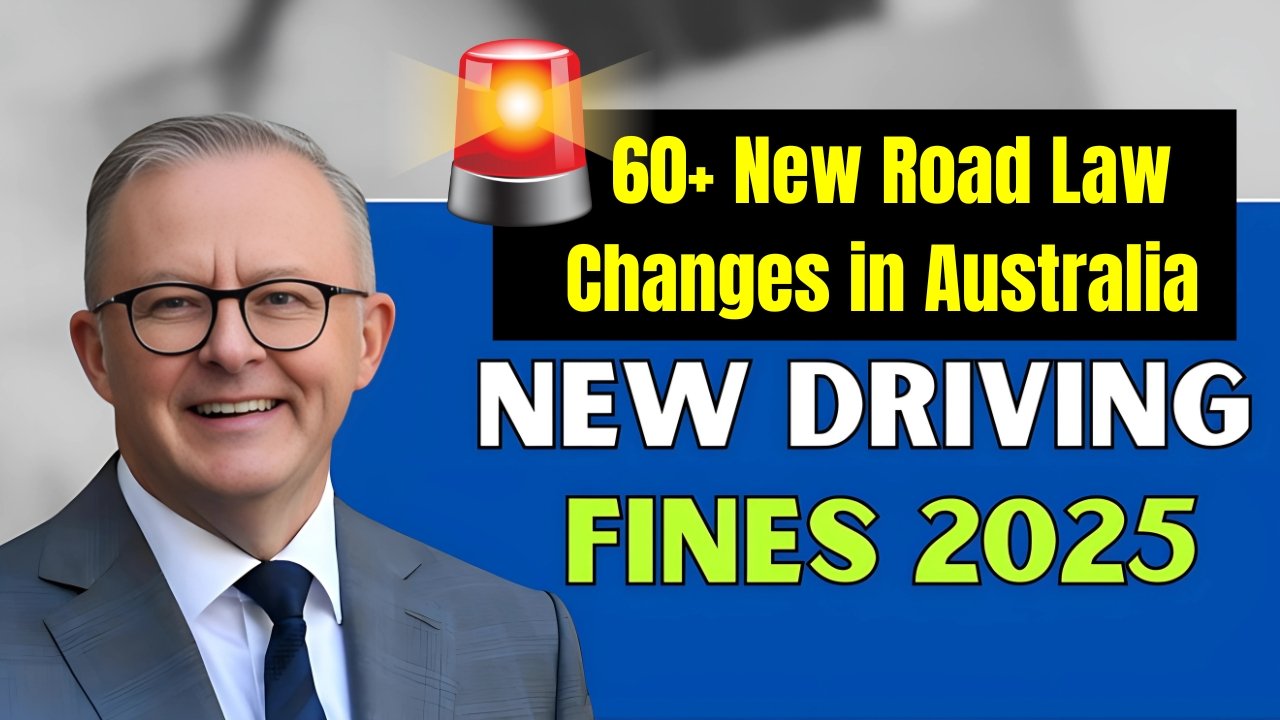
Major Road Law Overhaul: 60+ New Driving Regulations Hit Aussie Drivers from August 2025
Australia’s road safety scene is about to change in a big way, with more than 60+ brand-new rules rolling out everywhere from August 2025. The goal? Cut rising road deaths with stricter laws, clever tech, and fresh traffic control plans.
National Changes: What Every Driver Needs to Know
The biggest overhaul kicks in with smart surveillance cameras now set to go live in every state and territory. These high-tech eyes on the road spot mobile-phone use and busted seatbelt seats—even when cars are flying down the highway. Speed and stealth are the name of the game.
“This is a total game-changer for policing the roads,” notes safety expert Megan Cartwright. “The cameras do the watching, so officers don’t have to be on the scene to catch reckless acts.”
The price for using a mobile while driving is about to jump. Fines shoot to a staggering $1209, and offenders rack up four demerit points in certain areas. That’s a steep message from lawmakers, who are alarmed that distracted driving is one of the biggest causes of serious accidents.
State-by-State Breakdown: What You Need to Know
New South Wales
Forget the old “hidden-camera” tickets: NSW has changed its parking fine system to make it fairer. Council rangers must now pull you over to give you a fine and snap a picture to prove you were parked illegally. The ticket must be handed to you there and then.
Bigger news for folks behind the wheel: speed-camera tech has jumped to a whole new level. Average-speed cameras now cover whole highway sections, like the stretches of the Hume and Pacific. They photograph the speed of every car, even the small ones, not just big rigs.
Victoria
Good news for safety, big fine for indifference: Vic Rule 79A now says you have to slow to 40km/h when you pass many more roadside cars. The lights don’t just flash red or blue anymore; they can flash magenta or yellow, too. That means not just police or ambulance but also tow trucks, road crews, and roadside helpers.
If you forget and a camera or officer catches you, the bill now hits a jaw-dropping $961.
Queensland
Qld is gently speeding up the cost of staying on the road. After a break, car registration and traffic fines will jump 3.4 percent. The bigger news, though, is the new speed limit: 40km/h in narrow coastal streets heavy with people. The Hervey Bay Esplanade is one of the first places to get this safer-speed makeover.
South Australia
In South Australia, it’s now a serious offense not to ease up when you pass emergency vehicles. Drivers are expected to slow to 25km/h for any recovery truck flashing amber lights. Get caught, and the fine is a hefty $1648 and seven demerit points—enough to put you on the edge of losing your license.
Western Australia and Northern Territory
In Western and Northern Territory, new speed limit changes are kicking in on a number of routes, but they’re taking different pathways. WA is mostly lowering the limit, especially in the stretch between Margaret River and Prevelly, while the NT is doing the opposite—some highway bits are being lowered, and a few are getting a bump up.
The Human Impact: Beyond the Regulations
These new laws are about more than paperwork. They signal a big shift in road safety habits across the country. Fatalities have started to creep up again, so the government sees tougher limits, sharper fines, and more roadside checks as the best way to lower the numbers and keep the most at-risk users safe. The first reaction will be louder sirens for enforcement and more thrifty state budgets, but the pitch is to one day see fewer crosses along the highway.
FAQs
When do all of these new rules start?
Everything kicks in from August 1, 2025.
What’s the penalty for using your mobile while driving now?
Fines for picking up the phone while behind the wheel change from state to state but can top $1,200 along with four demerit points that stick on your record.
Should I lift the brake if I see a tow truck with its lights flashing?
Absolutely! The majority of states force you to ease down to 40 km/h or 25 km/h depending on the road type.
Am I getting a heads-up before I rack up a camera fine?
No way—those AI cameras are already rolling everywhere, so a fine lands in your inbox with no preview.
Australia Vehicle Registration Fee Changes October 2025 – Important Driver Updates